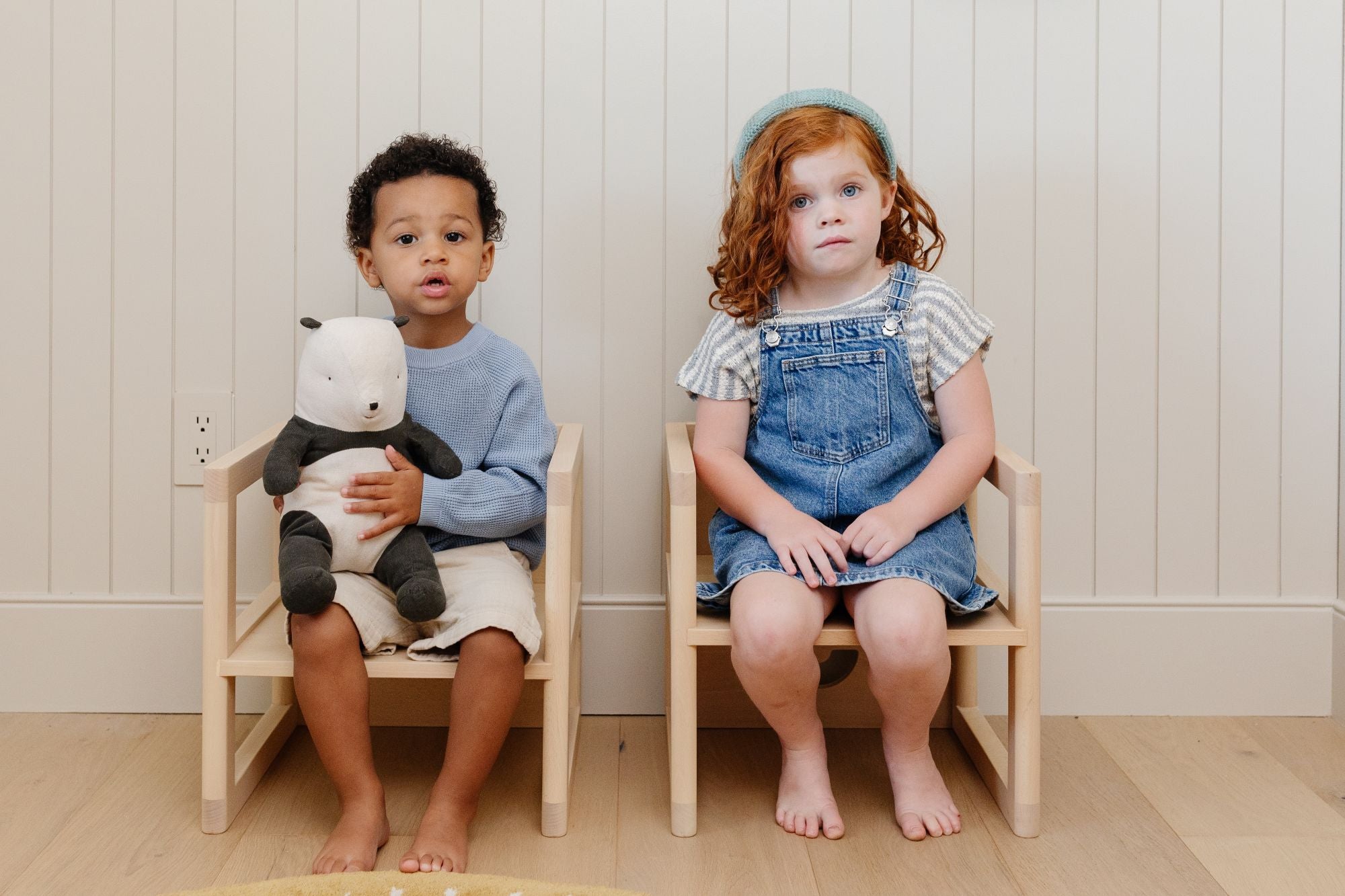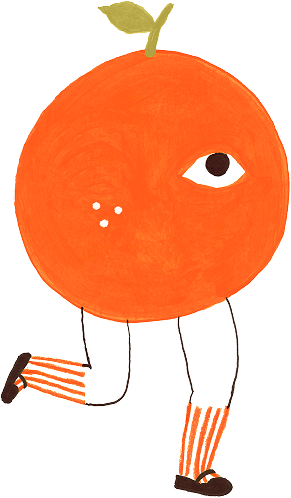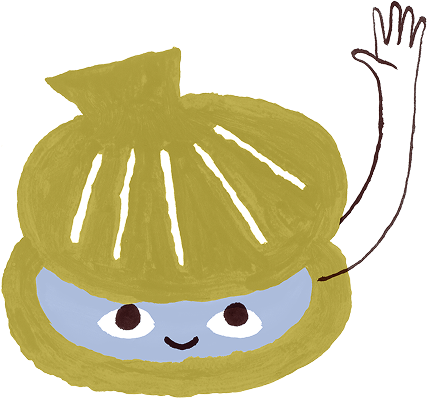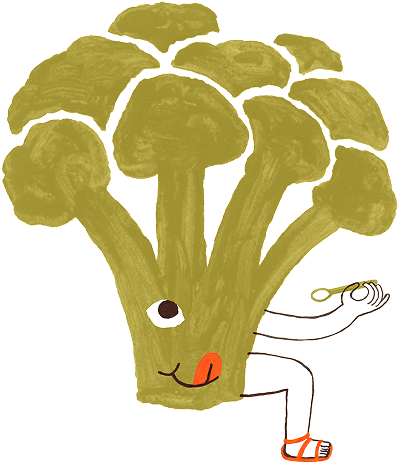"But what are we having for dinner!?" my 4-year-old demanded. He was tired, hungry, and about to lose his cool. Taking a deep breath, I asked, "Do you want to help me? You can help chop some cucumbers." Like magic, his face lit up, and he went to the refrigerator to get some cucumbers.
In this scenario, I used a combination of a few Montessori discipline strategies to help my son calm down. It doesn't always work, but sometimes, all our little ones need is a second chance to engage differently. The Montessori method encourages adults to use a unique approach to discipline that fosters the child's development and teaches essential life skills.
What Are the Montessori Principles of Discipline?
What is Montessori discipline in a few words? Montessori teachers approach discipline using a positive, curious approach that prioritizes the child's independence and learning. It uses a combination of prevention, modeling, holding boundaries, and lots of repetition.
Most importantly, Montessori discipline comes from a place of curiosity. One of the best ways to describe it comes from Dr. Montessori herself. She said:
"Respect all the reasonable forms of activity in which the child engages and try to understand them."
In other words, behavior is communication. When you notice a child behaving a certain way, ask yourself questions such as:
- What are they trying to say?
- What are their needs?
- What are they trying to learn?
- What is their goal?
With this approach, you can try to understand the underlying reasons for your child's behavior and respond accordingly.
Montessori Discipline Hacks
Here are some discipline strategies from Montessori classrooms that I used in my role as a teacher and now use as a mom of three:
1. Foster Independence and Freedom for Better Behavior
Have you ever noticed how children are happiest when they're busy? Yes, being bored is a normal part of life, especially for kids. But the antidote to boredom is having a sense of purpose and direction, even on a lazy summer afternoon. Montessori classrooms give children purpose by providing opportunities for independence and freedom within limits.
In Montessori schools, independence is a major feature in the learning environment. Children help with many tasks, such as keeping the classroom clean, greeting visitors, making snacks, and more. This helps children develop a sense of responsibility and independence. They feel busy and motivated instead of bored, which translates to better behavior.
Another important point is freedom. In Montessori education, children pick their activities. They don't have to sit through lessons they don't find interesting.
Instead, teachers wait for children to show interest in a topic before inviting them to a lesson. This results in less whining, more engagement, and overall happier children.
When to Use
Use this strategy as much as possible in everyday life.
Putting it into Action
How can you foster independence and freedom at home to prevent behavior problems? Here are some tips:
- Independence Through Chores. Invite your child to help out with chores around the house, such as cleaning, cooking, and putting their clothes away. Surprisingly, young children often love chores! As toddlers, my kids' favorite job was washing dishes by hand.
- Getting Ready Independently. Take a few extra minutes to let your child do things independently. For example, putting on shoes, putting on a jacket, packing a backpack, etc. At my house, my kids pack a bag with quiet activities to take on long car rides or to appointments.
- Create Charts. When your child is young, you can use charts with pictures that show the tasks they need to complete as part of their routine. As your child gets older, you can write out the steps. For example, a morning chart might include: brush teeth, comb hair, get dressed, put on shoes, and fill water bottle.
-
Freedom Through Choices. Offer your child choices. Make various activities available that your child can choose at any time. Some to try include:
- Set out art supplies on a shelf so they can color or do crafts.
- Set up a few fine motor skills activities they can choose from.
- Create a reading corner where your child can pick out a book.

2. Model and Teach Appropriate Behavior
Saying "please" and "thank you" are skills most parents teach. But, what about how to interrupt someone politely? Or how to ask to join a group of children who are playing?
In Montessori classrooms, children learn a set of lessons called "Grace and Courtesy." These lessons teach children life skills such as how to introduce themselves or how to ask for a turn. Learning these social skills can prevent a wide range of behavior problems.
Aside from formal lessons, Montessori teachers also model respectful behavior. This helps create a peaceful space where good behavior can naturally grow.
When to Use
Use this strategy when you notice a pattern of behavior, like frequently interrupting or grabbing toys away from other children. Don't use it in the moment when you notice the behavior. Instead, take a moment to address it when your child is calm.
Putting it into Action
How can you do this at home?
- Role Play for Interrupting. Take some time to role-play behaviors you'd like to see in your child. One problem I often had was when I was talking on the phone, my children would interrupt me
One Montessori approach is to have your child put their hand on your shoulder or elbow instead of interrupting. Then, you can acknowledge your child by putting a hand on top of theirs and smiling at them. Explain that this sign will show you that they want to talk to you. Then, as soon as you're done with your conversation, you talk to them.
This gives children a simple, appropriate way to communicate with you when you're busy. You can use it for phone calls, conversations between adults, or even if you're working on the computer.
- Create and Practice Scripts. Knowing what to say is half the battle for many social situations. You can teach your child how to say "excuse me" if they bump into someone. Or, practice a script for asking to have a turn on the swings.
You can practice the scripts through role-play. Or, have your child practice with two stuffed animals. That way, they can practice both sides of the conversation.
3. Set Boundaries and Redirect
Sometimes, children break rules and boundaries, which can cause problems within your home. Setting limits is an essential part of Montessori parenting that ensures everyone can live in a safe, comfortable space.
In the Montessori classroom, one of the most common ways to address rule-breaking is to redirect. This strategy is simple, but often effective. All it involves is reminding children of the rule they've broken.
For example, if a child is yelling loudly in the classroom, a teacher might crouch beside them and ask, "What kind of voice do we use in the classroom?"
This prompts the child to answer, "an indoor voice." If the child has forgotten the rule or doesn't want to remember, the teacher can remind them by saying, "We use a quiet, indoor voice."
Similarly, you can remind your child about where the behavior is appropriate. For example, if a child is running in the classroom, the teacher might invite them to go outside to run or do some climbing. This gives them an appropriate outlet for their energy.
When to Use
Use this strategy the first time your child breaks a rule.
Putting it into Action
Just like in the example above, children need to be reminded of boundaries and limits. This helps them build a strong understanding of your home's rules. It takes some repetition and consistency, but kids do catch on.
-
Setting Limits for Screen Time: One rule that works in our house is setting a timer for screen time. That way, when the timer goes off, screen time is over. Looking for more screen time tips? Learn how to manage screen time with a Montessori approach.
-
Finding an Appropriate Outlet: If your child is breaking a rule, try looking at what their behavior is trying to achieve. For example, if your child is jumping on the couch and that's not allowed in your home, you can redirect your child to where they can jump. You might say, "You want to jump. We can jump outside," or invite your child to set up an indoor obstacle course to get the wiggles out.
Need more help setting boundaries and saying no? Read tips and strategies on saying "no" from psychologist Dr. Nina Kaiser.

4. Gluing or Time-Ins
Sometimes, children need more attention when they're misbehaving. In the example with my son asking about dinner, I used gluing to bring him closer to me.
Gluing can help your child reconnect with you and focus their attention. Also called a "time-in," in Montessori classrooms, the teacher will ask a child to stay close to her. She might give a lesson to another student or prepare some materials, all with the child close to her. After a few minutes, she helps the child find an appropriate activity or lesson.
When to Use
Use this strategy if your child is repeatedly breaking rules, whining, or fighting with siblings.
Putting it into Action
At home, I use a few versions of gluing with my children.
-
Involve Your Child: If my children are whining, bored, or fighting with each other, I often ask them to join me in whatever I'm doing. If I'm cleaning, I get them to help sweep the floor. If I'm making dinner, I assign them cooking tasks like chopping vegetables or washing a pot. Bringing them into the household tasks gives them something to focus on.
- Time-in: Sometimes, children just need a little attention. Sometimes, if they're upset or having a hard time, I'll offer a hug, play a quick card game, or read to them. Often, about ten minutes is all it takes to get back on track.
-
Time-out Near You: As a last-ditch effort when nothing else works, I might assign my children spots to sit for a few minutes. It often ends up being in the kitchen, where I'm doing something anyway. I ask them to sit for a few minutes until I give them permission to get up.
Typically, I only need this strategy when my children are fighting with each other and none of the other options work.
5. Logical and Natural Consequences
Another helpful Montessori discipline strategy to use when children break rules is logical and natural consequences. Here is a short definition of each type of consequence.
Logical Consequence: This means you reinforce a rule with an outcome that relates directly. For example, if your child won't stop throwing toys, you put them away on a high shelf.
Natural Consequence: This means your child experiences the natural outcome of their actions, with no intervention from adults. For example, if your child won't put on their jacket and it's below freezing, as a natural consequence, they get cold when they go outside. Or, if your child leaves their toys outside in the rain, they get ruined.
When to Use
Use this strategy when there is a clear logical or natural consequence and you've already tried redirecting.
Putting it into Action
For this Montessori parenting strategy, you simply explain the consequence to your children. For example, you might say, "If you don't clean up the toys in the yard, they might get broken." Or, "If you throw the blocks again, we'll put them away for the rest of the day."
Then, you need to follow through. Consistency is key here, as your child will only learn the boundary if you actually put the blocks away or allow the toys to get ruined. Allowing your child to experience the logical or natural consequence will help them understand that their actions have outcomes they may not like. Just a few disappointments are often all it takes for your child to learn the lesson.
What About Tantrums?
A Montessori parenting approach to tantrums uses similar strategies such as holding boundaries, logical consequences, and offering choices. If your child is experiencing a lot of tantrums, read our blog post dedicated to managing tantrums.
Montessori Discipline: Lessons for Life
In a nutshell, Montessori discipline helps prepare children for real-world situations. Adults approach children with empathy and firm boundaries that help children learn everything from how to navigate social situations to how to take care of their belongings.
Do you use a Montessori approach to discipline in your home? Tell us about your parenting challenges and triumphs in the comments below.








Leave a comment
This site is protected by hCaptcha and the hCaptcha Privacy Policy and Terms of Service apply.